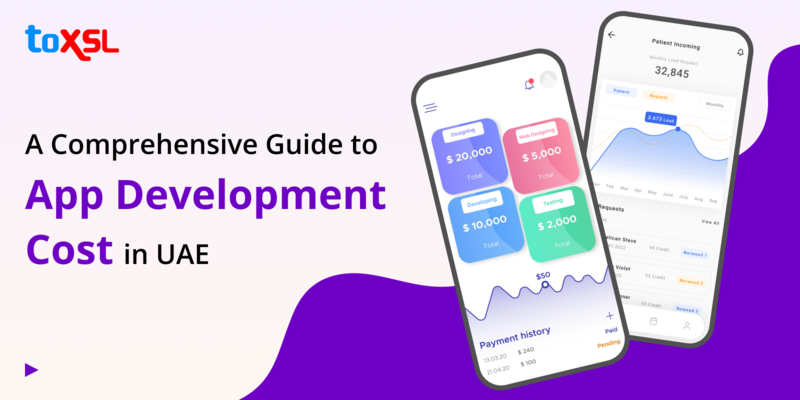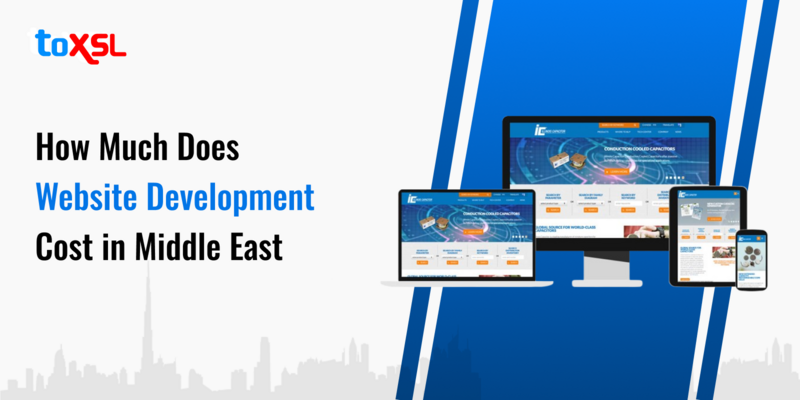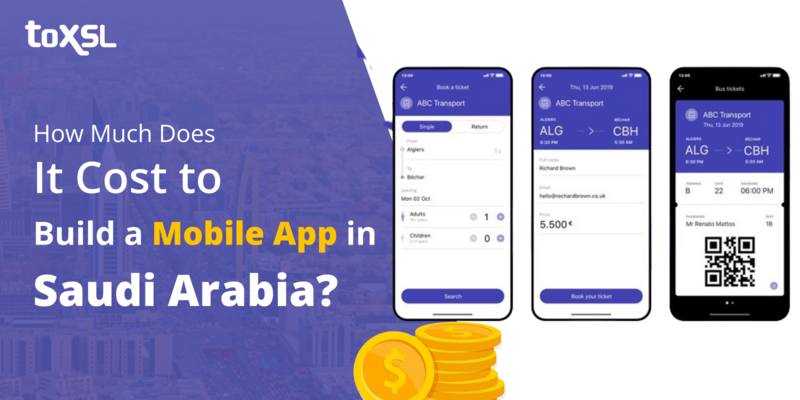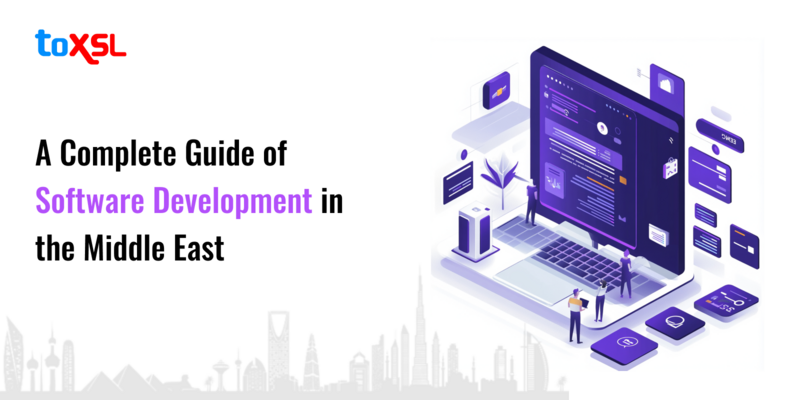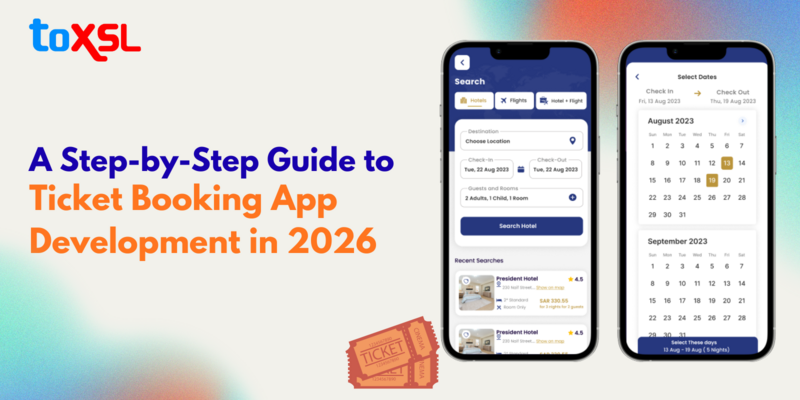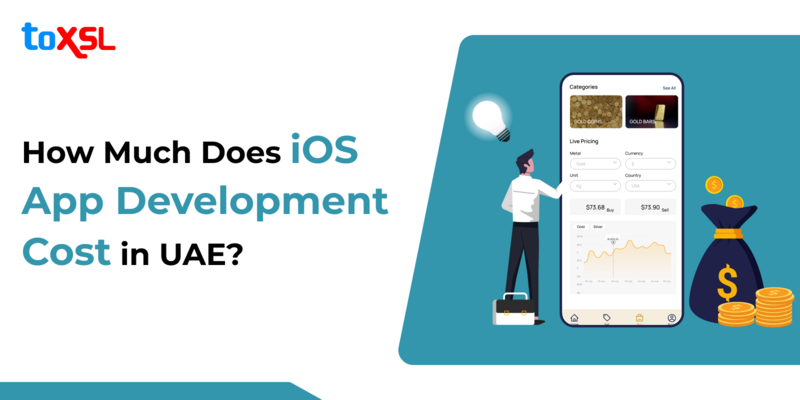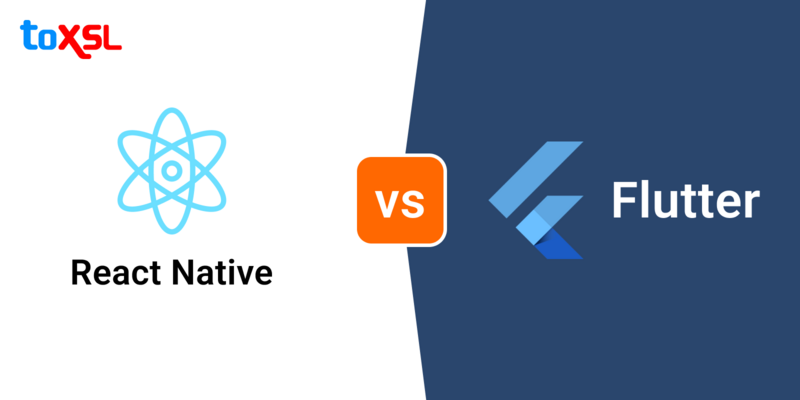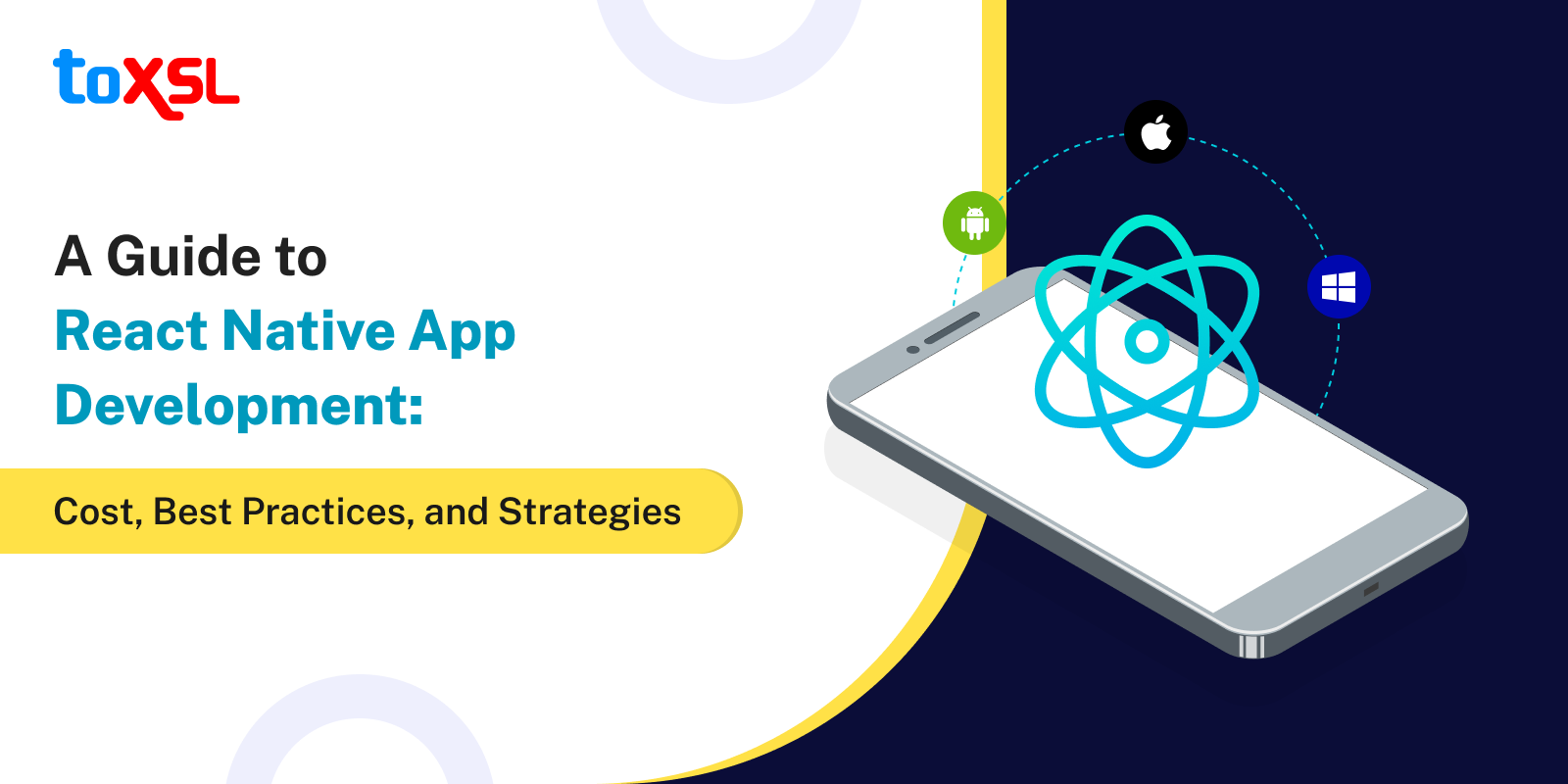
React Native has revolutionized the mobile app development landscape since its introduction by Facebook in 2015. This powerful framework allows developers to build custom mobile applications for iOS and Android platforms using a single codebase, significantly reducing development time and costs.
React Native is an open-source mobile application development framework that uses JavaScript and React. It allows developers to create truly native apps and doesn't compromise on users' experience. React Native provides a core set of platform-agnostic native components that map directly to the platform's native UI building blocks. This means you can build a mobile app that looks, feels, and performs like a native app, all while using familiar web technologies. In this blog, you will learn the cost, best practices, and strategies associated with React Native App Development in Dubai, UAE.
React Native App Development Cost
The one question that every business faces before developing a React Native app is “How much does React Native App Development cost?”. In this section, we will learn about the cost associated with custom React Native App development in Dubai. The general cost of mobile apps can range from $10,000 to $100,000. The overall cost can vary from client to client, because of their business requirements. The features used in an app are a major deciding factor in an app’s cost. Simply put, apps are of many types – simple, medium-complexity, and complex. Hence, the cost differs based on the complexity.
- Simple apps cost between $10,000 to $20,000, with basic features.
- The medium complexity apps cost between $20,000 to $30,000, with medium features.
- The complex app costs between $30,000 to $100,000, with complex features.
Let’s see a few factors other than app complexity that determine the cost of React Native app development in Dubai, UAE.

User Design and Interface
First impressions do matter in business. Your websites or UI/UX designs are the first thing that the user sees. Hence, creating user-friendly designs, easy to navigate is crucial. Your designs must be able to communicate and deliver your message to customers. Now you know why your UI/UX designs are important to the business. However, investing in good design can be a bit challenging, as the cost of designs can vary depending on the complexity of your designs. The basic designs can range from $5000 to $10,000, whereas the complex designs can range from $10,000 to 50,000, depending on business requirements.
Team Expertise
The quality of your app matters the most, hence the development team behind it. Having a good, experienced team by your side can help you grow your business at a faster rate. So, when choosing an app development company in Dubai, ensure that they have a reliable portfolio and experience in React Native app development. Also, check their previous authentic reviews and what clients say about them. Also, quality comes at a cost. Hiring skilled app developers with the knowledge of the right frameworks can range from $100 to $500 per hour. Additionally, the prices can vary depending on your requirements.
Integration with Third-Party Services
Third-Party integration can boost your business and help you generate higher revenue. It involves APIs, cloud services, and more. The cost can range from $5000 to $20,000, depending on business needs.
Quality Assurance and Maintenance
The quality check of the developed app is a must. It is crucial to allocate 20-30% of the budget to quality checks. This whole process can charge up to $5000 to $10,000.Also, post-launch maintenance is crucial, hence maintaining your app can charge you up to 15 to 20% of your budget.
What Are The Best Practices For React Native Mobile App Development?
React Native has revolutionized android app development, allowing developers to create cross-platform applications with a single codebase. However, to truly harness the power of React Native and build high-quality, performant apps, it's crucial to follow best practices. In this section, we'll explore key strategies and techniques to elevate your React Native development process.

Performance Optimization: Performance optimization should be at the forefront of your development strategy. Use FlatList instead of ScrollView for rendering long, scrollable lists, as it only renders items currently visible on the screen. Implement memorization techniques using React.memo() for functional components and use Memo() for expensive calculations to prevent unnecessary re-renders. Enable the Hermes JavaScript engine, especially for Android devices, to improve startup time and reduce memory usage.
Component Design: Component design plays a vital role in creating maintainable React Native apps. Strive to create small, focused components that are easy to understand and test. Embrace functional components and hooks over class components for cleaner, more concise code. Implement prop validation using PropTypes or TypeScript to catch errors early and improve code quality. These practices will make your codebase more readable and easier to maintain as your app grows
State Management: Effective state management is crucial for complex applications. Use local state (useState) for component-specific data that doesn't need to be shared. For more complex state management needs, consider implementing global state management solutions like Redux or MobX. Utilize the Context API for sharing data that doesn't change often, such as theme settings or localization preferences. A well-thought-out state management strategy will help prevent common pitfalls like prop drilling and unnecessary re-renders.
Navigation: Navigation is a critical aspect of any mobile app. Implement a smooth and intuitive navigation system using React Navigation, the most popular and well-maintained navigation library for React Native. Set up deep linking to allow users to navigate directly to specific screens from outside the app, enhancing the user experience and enabling better integration with other apps and services.
Efficient styling: Consistent and efficient styling is key to creating a polished app. Always use StyleSheet.create() for defining styles, as it provides better performance and error checking. Implement a flexible theming system that allows for easy switching between light and dark modes or supporting custom brand themes. This approach will ensure your app looks great and maintains a consistent user interface across different devices and user preferences.
Security: Security should be a top priority in your React Native app. Use secure storage solutions like react-native-keychain for storing sensitive data on the device. Implement proper authentication mechanisms and securely manage user tokens. Ensure all API communications use HTTPS and implement certificate pinning to prevent man-in-the-middle attacks. Regularly update your dependencies to patch known vulnerabilities and stay ahead of potential security threats.
React Native App Development Strategies
React Native has become a go-to framework for building cross-platform mobile applications. Its ability to create native apps using JavaScript has revolutionized the mobile development landscape. To harness the full potential of React Native, developers need to employ effective strategies throughout the development process. In this section, we will explore key strategies to ensure successful React Native app development.
Effective Strategies for Successful React Native App Development
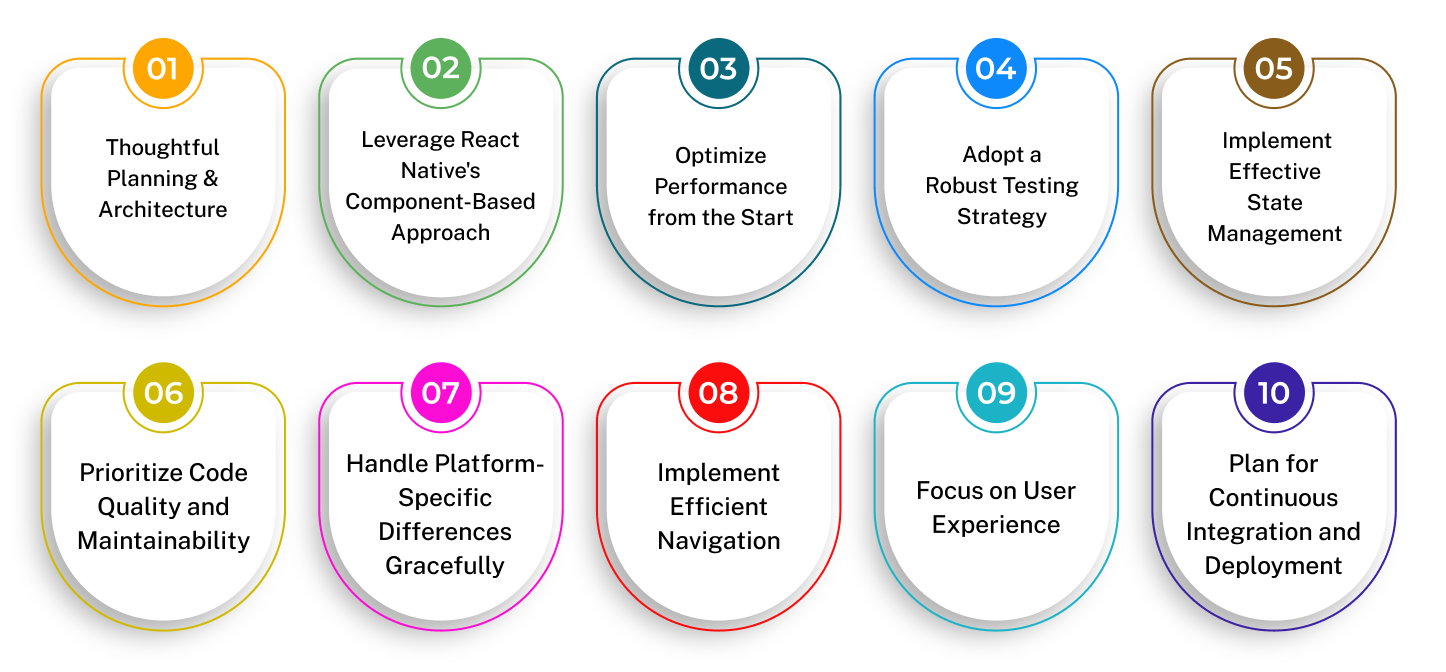
React Native has become a go-to framework for building cross-platform mobile applications. Its ability to create native apps using JavaScript has revolutionized the mobile development landscape. To harness the full potential of React Native, developers need to employ effective strategies throughout the development process. This blog post will explore key strategies to ensure successful React Native app development.
1. Thoughtful Planning and Architecture
Before diving into coding, invest time in thorough planning and architectural design. Start by clearly defining your app's requirements, target audience, and core features. Create detailed wireframes and mockups to visualize the user interface and user experience. Adopt a modular architecture that separates concerns and promotes code reusability. Consider implementing a flux architecture like Redux for state management in complex applications. Plan your folder structure to keep your codebase organized and scalable as your project grows.
2. Leverage React Native's Component-Based Approach
React Native's component-based architecture is one of its strongest features. Embrace this by creating small, reusable components that can be easily combined to build complex interfaces. This approach not only makes your code more maintainable but also speeds up development by promoting reusability. Implement a component library specific to your project, containing common UI elements styled according to your app's design system. This ensures consistency across your app and accelerates development.
3. Optimize Performance from the Start
Performance optimization should be a continuous focus throughout the development process. Start by using the latest version of React Native to benefit from ongoing performance improvements. Implement best practices such as:
Using FlatList for long scrollable lists
Implementing memoization with React.memo() and useMemo()
Avoiding unnecessary re-renders
Optimizing images and assets
Regularly profile your app using tools like the React Native Debugger and the Profiler API to identify and resolve performance bottlenecks.
4. Adopt a Robust Testing Strategy
Implement a comprehensive testing strategy to ensure your app's reliability and stability. This should include:
Unit testing for individual components and functions using Jest and React Native Testing Library
Integration testing to verify how different parts of your app work together
End-to-end testing using tools like Detox to simulate real user interactions
Manual testing on various devices and OS versions
Integrate these tests into your CI/CD pipeline to catch issues early in the development process.
5. Implement Effective State Management
Choose an appropriate state management solution based on your app's complexity. For simpler apps, React's built-in useState and useContext hooks may suffice. For more complex applications, consider using Redux or MobX for global state management. Regardless of the solution you choose, follow best practices like keeping your state normalized, minimizing state updates, and using selectors for derived data.
6. Prioritize Code Quality and Maintainability
Maintain high code quality standards throughout your project. Implement static code analysis tools like ESLint and Prettier to enforce consistent coding styles and catch potential issues early. Use TypeScript for improved type checking and better IDE support. Write clean, self-documenting code with meaningful variable and function names. Include comments where necessary to explain complex logic or algorithms.
7. Handle Platform-Specific Differences Gracefully
While React Native allows for significant code sharing between platforms, there will inevitably be platform-specific differences to handle. Use platform-specific file extensions (e.g., ComponentName.ios.js and ComponentName.android.js) for components that need different implementations on iOS and Android. Utilize the Platform API to detect the current operating system and conditionally render different components or apply different styles as needed.
8. Implement Efficient Navigation
Choose a navigation library that suits your app's needs. React Navigation is the most popular choice and offers a wide range of navigation patterns. Implement deep linking to allow users to navigate directly to specific screens from outside the app. Optimize your navigation structure to minimize unnecessary re-renders and ensure smooth transitions between screens.
9. Focus on User Experience
Prioritize user experience in your development strategy. Implement smooth animations and transitions using the Animated API or libraries like react-native-reanimated for more complex animations. Ensure your app is accessible by implementing proper semantic markup and supporting assistive technologies. Optimize your app's responsiveness to different screen sizes and orientations.
10. Plan for Continuous Integration and Deployment
Set up a robust CI/CD pipeline to automate testing, building, and deployment processes. Use tools like Fastlane to streamline the process of building and submitting your app to app stores. Implement proper versioning and use staged rollouts when releasing updates to minimize the impact of potential issues.
Why is ToXSL Technologies Your Best React Native App Development Partner?
Remember that React Native is a powerful framework for building cross-platform mobile applications that is constantly evolving. Hence businesses must stay updated with the latest trends, tools, and community recommendations. Regularly revisiting and refining your development practices can help you leverage the full potential of React Native.
So, if you are looking to develop mobile apps using React Native in Dubai, we are here for you. We are a leading mobile & web app development company in Dubai, UAE. We at ToXSL Technologies offer the Mobile App Development company in Dubai to businesses worldwide. Our team of seasoned professionals ensures that you get the best solutions that can help you stand out. We believe in building businesses with the help of our creative and unique solutions, helping them generate more revenue than ever before. Get a quote today!
Frequently Asked Questions
1. Why do businesses choose React Native App Development in Dubai?
Here are a few reasons why businesses choose React Native App Development in UAE:
Low mobile app development cost
Accessibility to third-party plugins and APIs
Simplifies User Interface
Enhanced community support
Built-in Components
2. How long does it take to develop a React Native app in Dubai?
The time to develop a React Native app in Dubai can vary significantly depending on several factors like app complexity, features and functionality required, team size and experience, project scope, and requirements. For a simple app with basic features, development might take 1-2 months. A more complex app could take 3-6 months or longer.
3. How much does it cost to hire a React Native developer in Dubai, UAE?
The cost of hiring a React Native developer in Dubai, UAE can vary based on several factors:
Experience level: Junior developers typically cost less than senior developers.
Project complexity: More complex projects may require higher-paid specialists.
Contract type: Full-time employees vs. freelancers vs. outsourcing companies.
Generally, you might expect these approximate monthly salary ranges:
Junior React Native Developer: $2,200 - $4,100
Mid-level Developer: $4,100 - $6,800
Senior Developer: $6,800 - $10,900+


